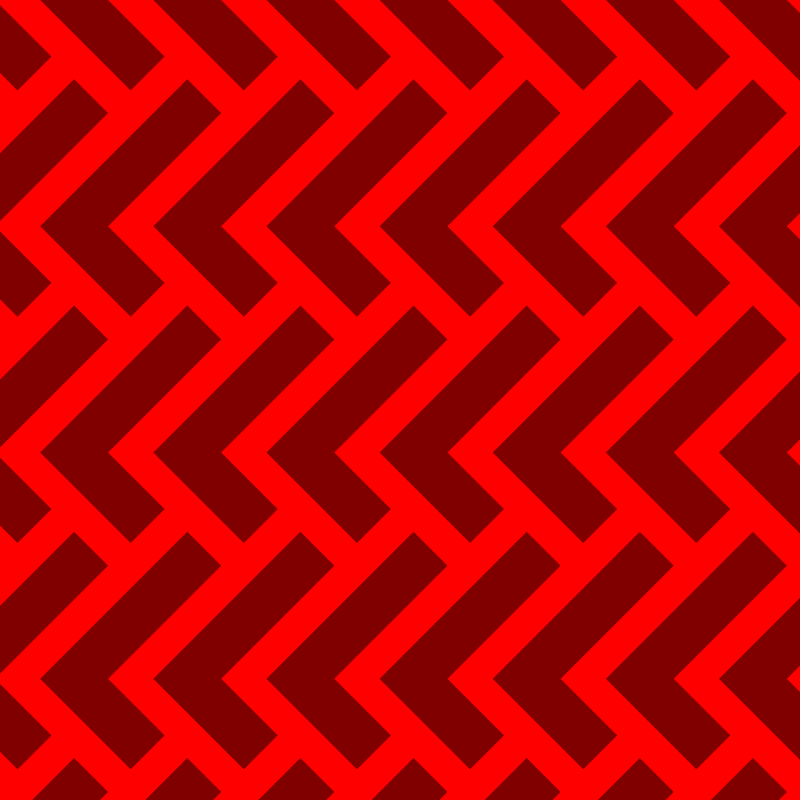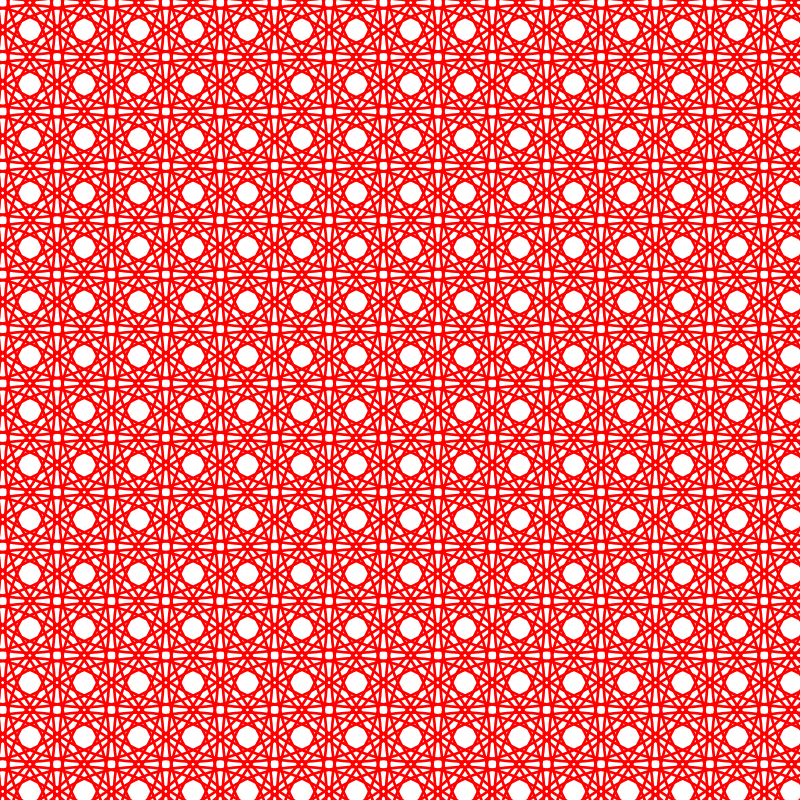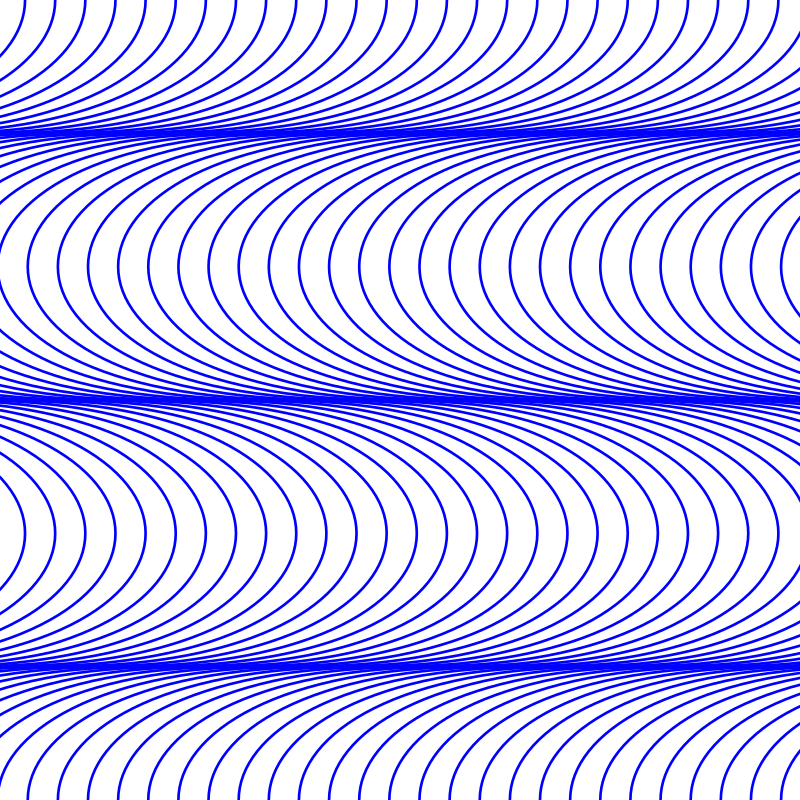-
Notifications
You must be signed in to change notification settings - Fork 132
New issue
Have a question about this project? Sign up for a free GitHub account to open an issue and contact its maintainers and the community.
By clicking “Sign up for GitHub”, you agree to our terms of service and privacy statement. We’ll occasionally send you account related emails.
Already on GitHub? Sign in to your account
Define overflow:visible behavior for pattern tiles #129
Comments
|
Thanks for filing this for me @AmeliaBR Here is the test case I put together that shows it's implementation. http://codepen.io/grayghostvisuals/pen/0d8d57b976de9863a3e3949bb863232e I would prefer the current method this pen demonstrates as using the other method of |
|
@dennisgaebel I seem to have led you astray. Playing with your code, the problem in Firefox isn't caused by the Now, duplicating patterns with href references is another section of the spec that isn't as well defined as it should be. But you might be safe just calling this a Firefox bug. As for the Alas, it looks like we have browser compatibility (Blink, Gecko, & Edge, all tested on Windows) for always clipping to the pattern tile regardless of the |
|
It would be a real shame not to get this fixed. It is a huge authoring problem. In practice, handling overflow is not hard implement. A simple strategy it to creates a tile of the correct size and then draws into the tile repeatedly, stepping by the tile width/height each time as necessary until the tile contains the complete pattern including overlaps from neighboring tiles. Then one tiles as normal. This is the strategy we (Inkscape) uses to render hatches which can also overflow. What is missing in the spec is the rendering order when there is overflowing. For hatches, the spec dictates that the hatch paths are drawn from left to right. For patterns, I would suggest we spec tiling a row from left to right then tiling rows from top to bottom. |
|
Can this be fixed in time for SVG 2? |
|
It's easy enough to define how overflowing pattern tiles could behave (Tav's description makes sense), but we would need commitments from other implementers before including it in the spec. |
|
It's probably fine to require overflow:visible with overflowing content to make the final pattern tile size larger and to draw multiple copies of the <pattern width="10" height="10" overflow="visible">
<circle cx="0" cy="0" r="4"/>
</pattern>If you extend the pattern area like this: where You can easily create content that would require many paints of the pattern, too, such as: <pattern width="10" height="10" overflow="visible">
<rect x="-10000" y="-10000" width="20000" height="20000"
fill="black" fill-opacity="0.01"/>
</pattern>Should this be painted thousands of times to end up with a completely opaque black pattern? Maybe! But it would be good to avoid allowing authors to easily create slow rendering content like this. My feeling is that the most useful case is where we paint slightly out of the pattern tile, so maybe we can – at least initially – require that the pattern only be repeated in the eight adjacent spaces to the original tile area. If we find it's useful to have a bigger intermediate area for rendering, maybe we can have an attribute for that. Tav's suggestion to paint paint top to bottom, left to right, sounds good. |
|
I'm not sure I'd want to specify "overflow, but only onto the immediately adjacent tiles". It should be straightforward to calculate the extent of overflow from the (decorated) bounding box of the pattern contents. Filters complicate it, but all implementations will have a means of calculating the maximum "dirty" area of a given block of SVG code. Yes, in some cases the results could be horrible for performance, but I don't think that's reason enough to impose an arbitrary limit. |
|
I've done some experimenting and I have had trouble coming up with a use case where the extra repeats are useful. If the pattern has a simple opaque design, you get no benefit from the extra repeats. You can't achieve effects with +/-nS that you can't achieve with +/-S. Filters or other translucent elements that extend further than +/-S mostly just result in messy results. For example, a large drop shadow just ends up casting multiple extra shadows over your original object, making it darker and muddier. So maybe Cameron's suggestion of just overflowing to the immediately adjacent tiles is not too unreasonable. But perhaps someone can come up with an example that does do something useful with the extra repeats. |
|
It's not too hard to come up with interesting tiling using simple shapes that require more than +/-S. The first example is a simple filled rotated rectangle (requires 4 copies). The second example is a circle with just a stroke (requires 5 copies). The third example is a squiggly line (requires 20 copies, but would probably be better done as a hatch). |
|
Yeah I see how some of those are a bit easier to create with more than +/-S, especially #2. But none would require much extra work if overflow was limited to the immediately adjacent tiles. @Tavmjong How does Inkscape work out how many times it needs to tile? The BBox? Wouldn't you risk getting clipped results when the pattern uses stroked shapes? Or does the algorithm add a fudge factor? |
|
We discussed this issue on the telcon this morning. Given that there isn't consensus on the best approach to take (restrict max tile area or not) and the uncertainty of either option actually being implemented. We're going to leave the effect of We will definitely look to improve this behaviour in future, as it's badly needed by authors. |
|
Pull request: #164 to clarify overflow behavior and to encourage implementers to render overflow. |



The effect of visible overflow for pattern tiles was not clearly defined in SVG 1, leading to non-interoperable implementations. In SVG 1.1, a warning was added:
I would really like to remove this "officially undefined" behavior from SVG 2.
Relevant discussion from the mailing list in 2009 (thread starts here) includes this statement from @erikdahlstrom :
That second link goes to this Tracker issue, which has no updates since 2009.
This is not a theoretical issue. I get complaints & confusion from authors about why patterns that work just the way they want in one browser don't work in another. Specifically, the issue comes up when the repeating element of the pattern doesn't fit in a neat rectangular tile.
Here's a recent example screenshot. The top image is from Firefox, showing clipping to the pattern tile despite the

overflowvalue, the bottom image is from Chrome:My current best advice for the authors is to use
<use>elements to create enough repetitions to completely fill in the rectangular tile. But that's far from ideal. Not only is it messy and repetitive code, it also opens up the possibility of edge effects in the rendering (revealing the edges of the pattern tiles).As I understand it, the only aspect of overflowing pattern tiles that really needs to be defined is the rendering order. When overflowing content from pattern tiles overlaps, which tile is painted on top? E.g., are tiles painted in rows, left to right then top to bottom, or in columns? I don't see any theoretical reason to prefer one or the other, so this could be based on whatever is easiest for current implementations.
Next steps:
The text was updated successfully, but these errors were encountered: